Everyone thought Bubsy was dead and gone. If you were playing video games in 1996, you remember what happened to him, rendered in rudimentary 3D for the first time. How could we forget? Even if you weren’t playing games back then, you’ve probably heard the stories. Some called it a tragedy, but others claimed it was just deserts. It’s possible that maybe even Bubsy himself saw it coming.
But then, more than 20 years later, something happened that no one could have predicted: Bubsy is starring in new games once more. Somehow, against all odds, Bubsy is alive and kicking. This stunning revelation poses a series of questions, including “How?” “Why?” and “No, seriously, how?!”
Bubsy is a happy-go-lucky anthropomorphic orange bobcat, always wearing his trademark white shirt with a bold red exclamation point on it and sporting a healthy dose of ’tude to match. The pun-loving feline was the star of a couple serviceable 16-bit platformer games published by Accolade in the early to mid ’90s.
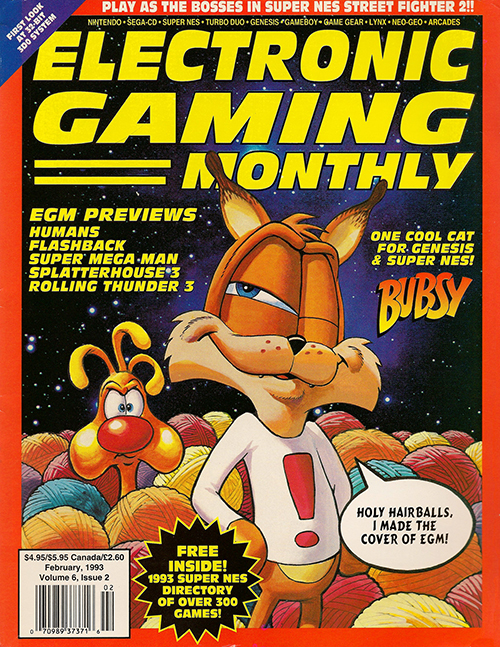
In those initial years, Bubsy did all right for himself. He was the cover star of EGM #43 and was therein awarded “Most Hype for a Character of 1993.” Heck, he even got a TV pilot for a Saturday morning cartoon. And even though Bubsy never quite stacked up to Mario or Sonic, he was solidly at the top of the mascot platformer B-tier. Unfortunately for the quippy bobcat, sales of Bubsy II and an Atari Jaguar–exclusive game failed to meet commercial expectations despite decent reviews. Original Bubsy creator Michael Berlyn actually stated in a 2006 interview that he felt the franchise was headed downhill after Bubsy II’s development was handed off to a different team within Accolade that “had not understood the original vision.” But the modern game-playing public pins Bubsy’s downfall on one game and one game only: Bubsy 3D.
Developed concurrently with early 3D platformer standard bearers Super Mario 64 and Crash Bandicoot, 1996’s Bubsy 3D: Furbitten Planet had the deck stacked against it. By comparison, Bubsy 3D was a mess to look at, listen to, and play. The blocky, stiff, and incessantly chatty Bubsy lacked the fluidity and polish of his competitors. There’s something to be said for executing a functional polygonal action game in those initial years of the technology, but the end result for Bubsy simply didn’t match up to the game’s ambitions.
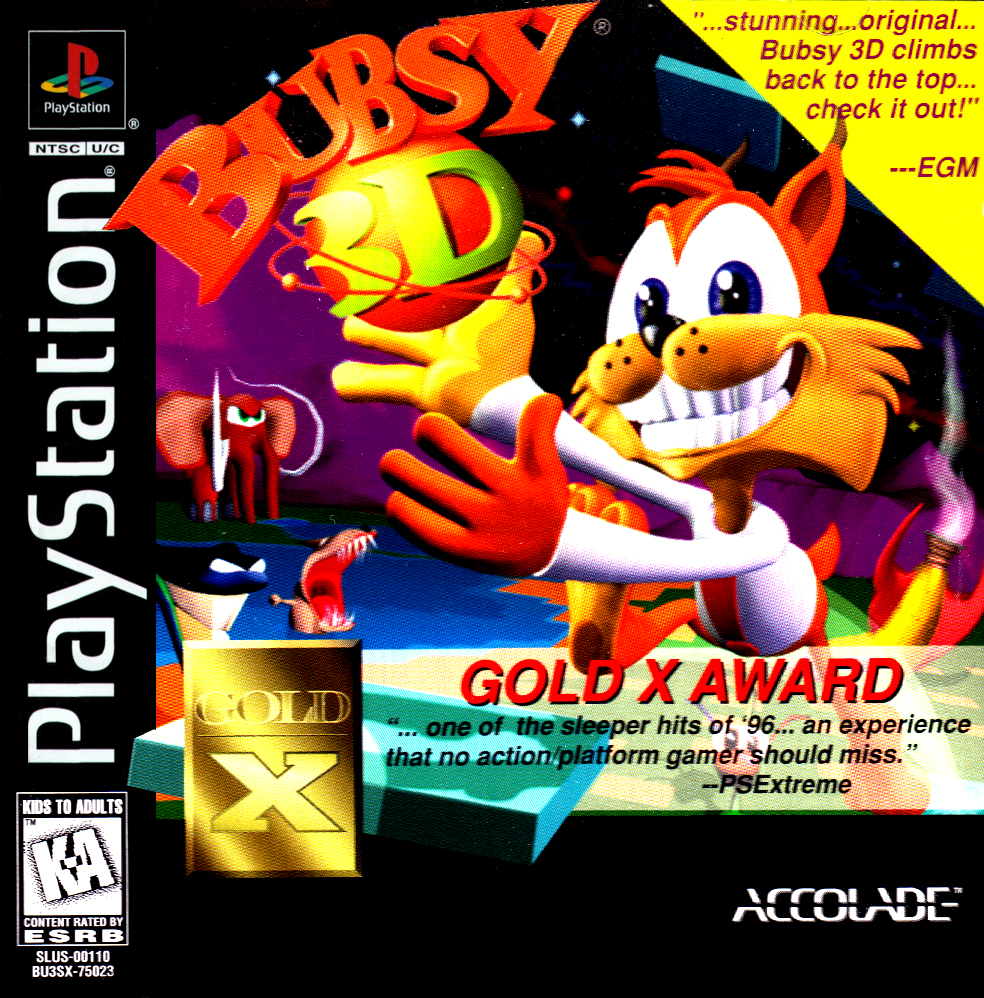
entirely forthcoming EGM blurb.
Credit: Accolade
If you heard of Bubsy at all in the 20-plus years that followed, it was most likely something about how Bubsy 3D was so unanimously reviled that it tanked the character for good, but that’s only partially true. In aggregate, Bubsy 3D received mixed reviews from critics at the time of release and even won some awards. EGM did give the game particularly low marks, but a front-of-box quote pulled from the magazine’s preview coverage bestows praise upon the game.
However, unlike the wealth of other unremarkable mascot platformers (Aero the Acrobat, Croc, Jersey Devil, et al.) that tried to pry players away from the Mushroom Kingdom, Bubsy did not merely fade into obscurity—Bubsy 3D’s worst qualities were memorably bad. Perhaps it was always sitting in the shadow of Nintendo’s and Sony’s golden children that made Bubsy 3D look so comically inept, or perhaps the game actually just keeps getting worse with age. Either way, retrospective examination of Bubsy 3D has been overwhelmingly negative, with the game included on numerous Worst Game Ever lists. Deserved or not, Bubsy’s failure became a proto-meme in gaming circles, and Accolade’s reluctance to return to Bubsy in the years that followed seemed to seal the character’s fate.
But as it turns out, this wasn’t the troubled feline’s true ending.
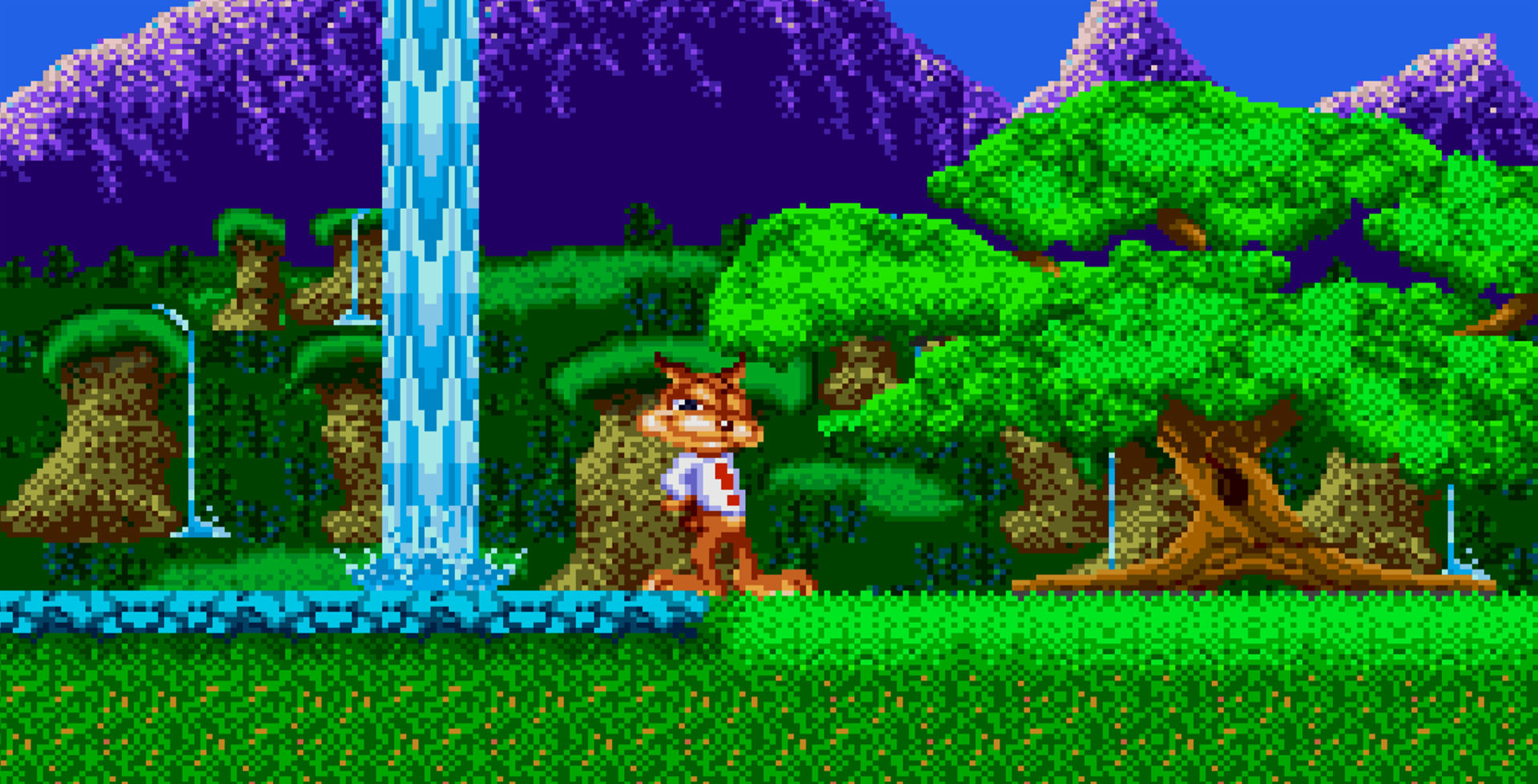
Credit: Accolade
Fast forward about 20 years from Bubsy 3D, and unlike pretty much everyone else in the world, game publisher Tommo still saw some potential in the dormant bobcat. Tommo acquired Accolade—which had been passed around various companies since the late ’90s—from Atari in 2013.
Bubsy was part of that deal. “We knew him from the Genesis and SNES days and also knew of his debacle with Bubsy 3D,” Michael Devine, VP of Business Development at Tommo explained. “We also saw that he had what seemed like an equal number of worshippers and haters—even after all those years. The path to deciding on making new games had a lot to do with the passion of fan base (both ways).”
It’s difficult to determine just how many of the over 14,000 followers of the Bubsy Twitter account are sincere and how many are rubberneckers. But pockets of fandom do indeed pop up in a number of places around the internet. A Bubsy fan Discord channel has over 100 members. DeviantArt is host to a multitude of Bubsy fanart (and after a casual glance, most of it seems downright wholesome).
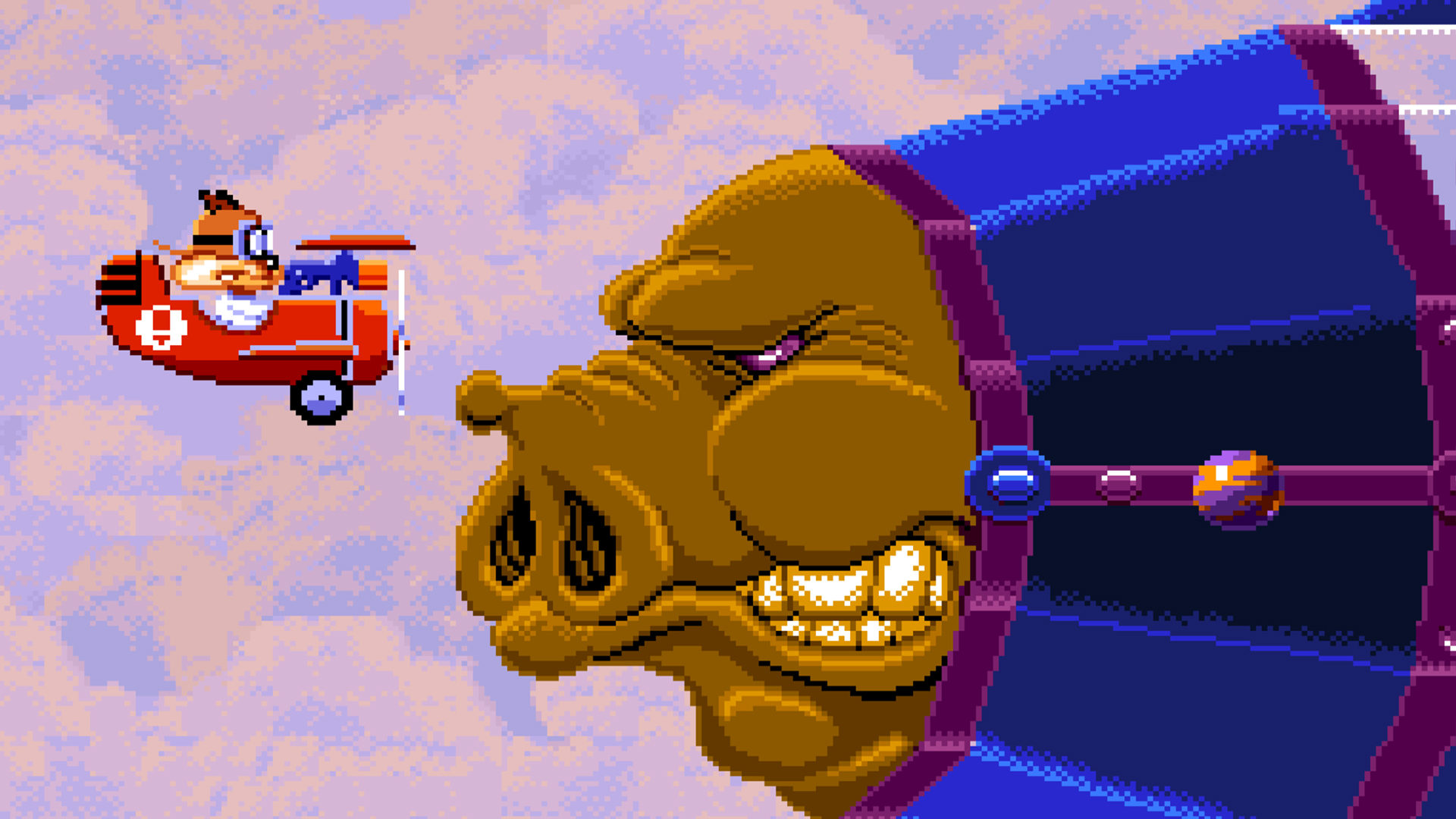
Credit: Accolade
Even if there’s a tinge of irony to Bubsy fandom, that’s actually part of the character’s personality now. “The real reason he’s been in the gamer’s consciousness all these years is because he got tagged at some point as being ‘the worst video game character ever,’” Devine explained. “The effect this had when he came back was that audiences by and large had never really seen him or played his games.”
Plus, with ’90s nostalgia reaching a fever pitch, Bubsy’s inextricable blend of sincerity and self-deprecation is ripe for revival.
“Bubsy games are all about the character,” Devine told me. “He’s very self-aware—he sees himself as an ‘actor’ in the video game. He craves the spotlight and is culturally attuned to the outside world. However, at the same time, he’ll stop and admire his own reflection for an eternity.”
We can’t talk about the ironic component of Bubsy without mentioning Bubsy 3D: Bubsy Visits the James Turrell Retrospective, a free, unlicensed artgame published online by Arcane Kids in 2013. This alt-Bubsy game was released 18 years after the original Bubsy 3D, at a time when Accolade only existed in an intellectual property archive somewhere. The game itself is a surreal experience where you control a blocky bobcat on a visit to the Los Angeles County Museum of Art to see the titular exhibition (a real show that was on view at the time of release). Once there, you soon encounter all manner of bizarre happenings that result in Bubsy sliding to hell in a coffin and ultimately smashing an Applebee’s to pieces to reveal the word “ART” underneath. You can also enter a bunch of cheat codes to further warp the experience.
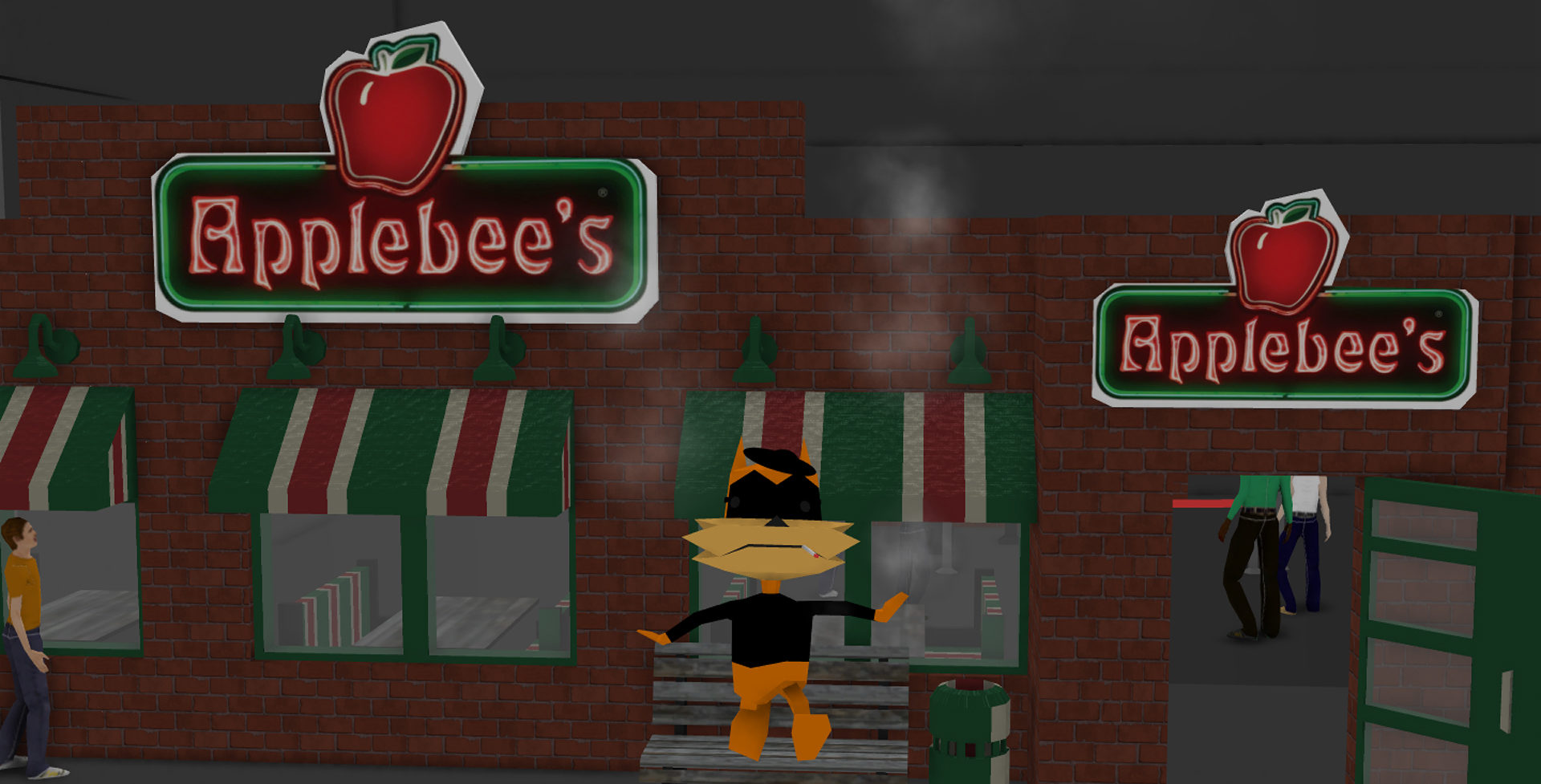
Credit: Arcane Kids and, uh, probably also Accolade and Applebee’s?
In Bubsy Visits the James Turrell Retrospective, the typically garrulous mascot is less the wise-cracking trickster and more of a silent conduit to engage players with artistic concepts. The irony was that Bubsy would never strike anyone as “intellectual,” and yet there he was, pushed into all of these heady situations. It all worked because it was executed with a sharp sense of humor and ramshackle construction that recalled the old Bubsy 3D’s janky world. Bubsy felt more “real” because of Arcane Kids’ game, both as a character that acknowledged its own history, and as a game world that merged Bubsy’s low-poly environment with settings and objects from non-virtual contemporary culture. The game reestablished Bubsy as a character that’s trying his best with what he’s got in a messed-up world. In 1996’s game, that was making the jump to polygonal graphics. In 2013, it was falling into a postmodern wormhole.
Bubsy Visits the James Turrell Retrospective set an awkward stage for the most recent official Bubsy games by posing the question, “What would people even want from a new legitimate Bubsy game?” Striking the “correct” tone and quality for a sequel seems an almost impossible task. Would people even want “good” Bubsy games? After all, the character’s modern appeal rests so much on his dogged persistence through games that never did him justice in the eyes of fans and were righteous comeuppance for detractors. To complicate matters, Bubsy Visits the James Turrell Retrospective gave us an exposé that peered so far into the very soul of the orange bobcat that it seemed impossible to ignore the mascot’s tumultuous history.
Enter 2017’s Bubsy: The Woolies Strike Back. Developed by Black Forest Games, Woolies Strike Back was the first step out of the gate for Bubsy’s revival and attempted to revisit the bobcat’s side-scrolling platformer origins. As a nod to the bobcat’s legendary talkativeness, a verbosity slider allowed players to adjust how much chatter Bubsy espouses during regular play (anything less than “full-on” feels inappropriate). Critics seemed to agree that Woolies Strike Back was a return to form for Bubsy, but given the character’s reputation, that’s not always meant as a compliment.
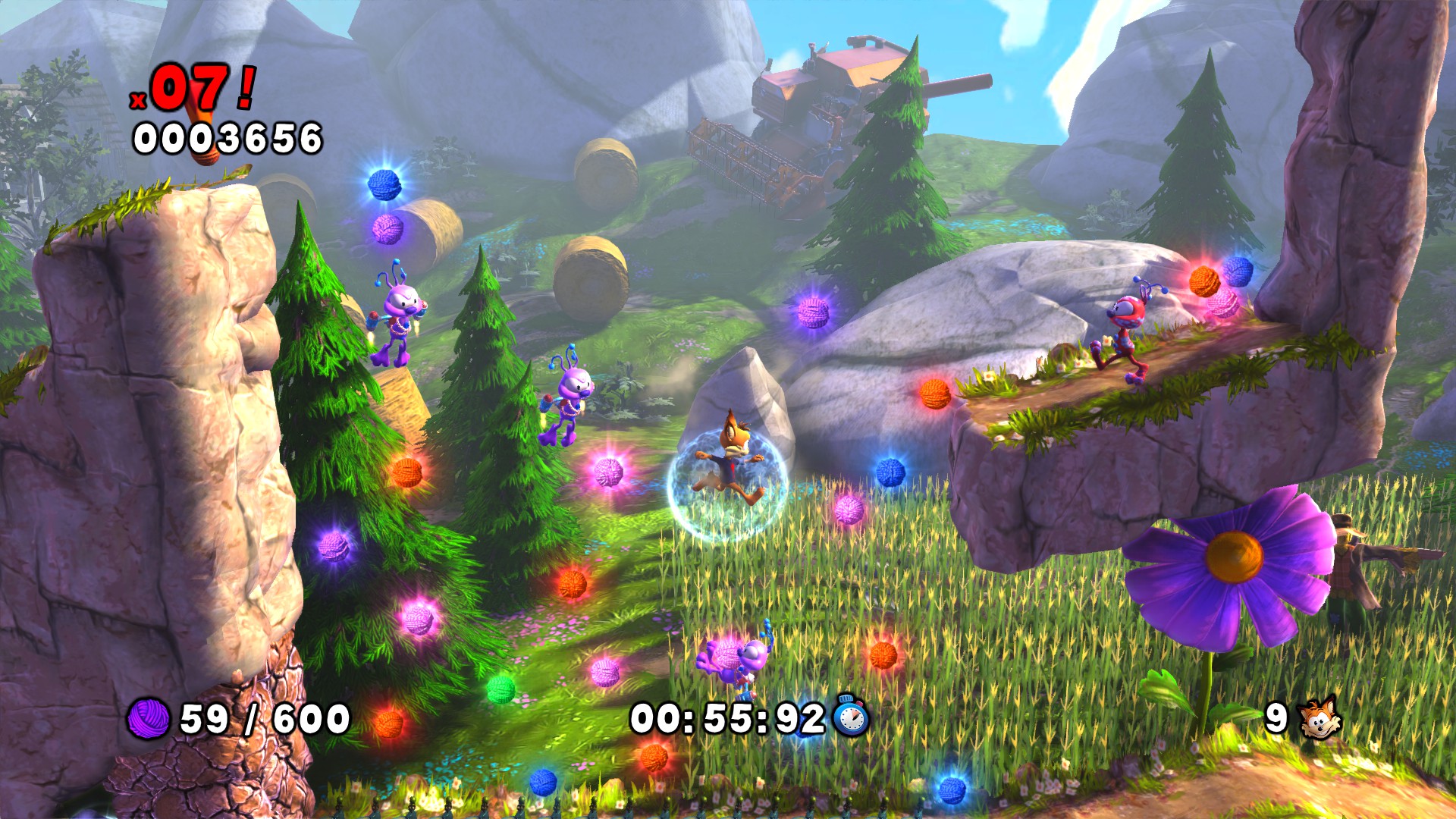
Credit: Accolade
Developer Choice Provisions took over for 2019’s Bubsy: Paws on Fire and adapted the character and lore(!) to the formula of their Runner series. Combination rhythm game and platformer, Paws on Fire works within a structure that had already proven successful for the developer, though this means it does play differently than a traditional Bubsy game.
“It was a delicate dance in some ways,” said Dant Rambo, producer and writer on Paws on Fire, on having to navigate a new Bubsy game through the character’s mucky legacy. “I wrote the narrative for the game and my goal was to present Bubsy as a character with illusions of grandeur who’s still waiting for the world to catch up to his greatness. He saw the collective groan when the game was announced, and he didn’t let it get him down—he just went right on thinking he’s the cat’s pajamas. There’s something kind of endearing about that!”
Rambo wrote Bubsy as a character that is “online,” in a sense, which meshes appropriately with the notion of social media narcissism. “He’s a lovable character in some ways, at least at a distance. He’s arrogant and will forever think he’s the star of the show, certainly, but he also refuses to let the Internet’s vitriol affect his self-confidence,” Rambo told me, adding, “or maybe I’ve just thought way too much about the character of Bubsy. There’s no denying the series has had its ups and downs over the years (mostly downs, I’ll admit!), but I’ve always had a soft spot in my heart for the character.”
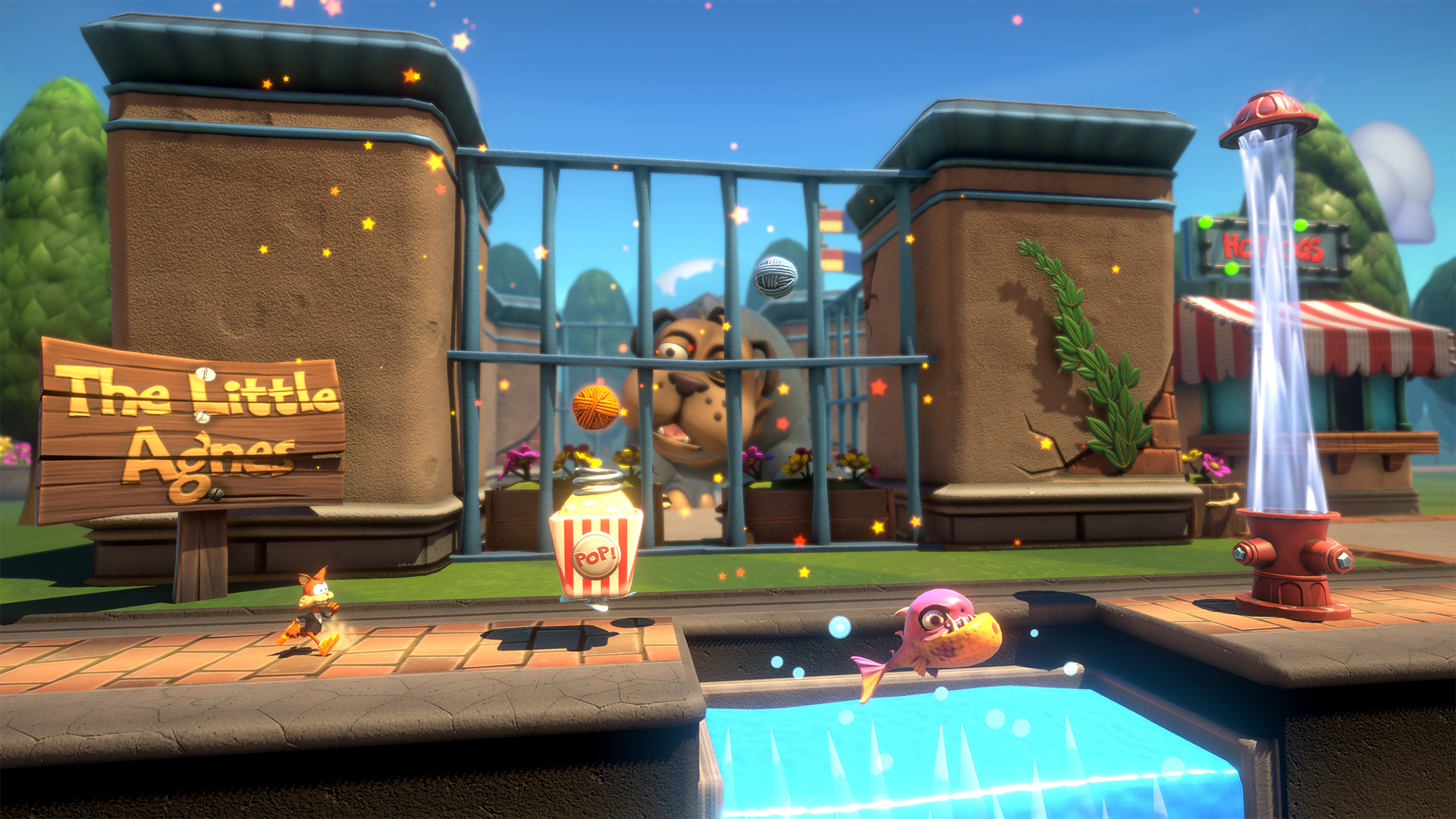
Credit: Accolade
Whether you enjoy the new Bubsy games or not, it’s clear that they retain the spirit of Bubsy as a character. “The key is pretty simple: he’s not mean,” Tommo’s Michael Devine said of the essential Bubsy traits he lays out for developers. “Bubsy doesn’t think he’s a bully. He doesn’t swear or take people down. He runs over people because he doesn’t pay attention to anyone but himself, but he has a good heart—it’s just buried somewhere close to the center of the earth.”
Thanks in no small part to Bubsy’s Twitter account codifying his character into a meta-layer outside of the games themselves, Bubsy’s personality is resonant, and maybe even prescient, for players and gawkers alike. “He developed a cult following, a really devoted cult following,” Devine said. “They quickly drowned out the haters on social media. Busby is their Bobcat King. He’s flawed, funny, self-absorbed and still nice to his fans. They are an Army—god help them!”
Where Bubsy goes from here is impossible to say. Paws on Fire was greenlit after an impromptu Twitter conversation about including Bubsy as a DLC character in Runner 3, so who knows, maybe a random TikTok will inspire the bobcat’s next caper. Bubsy remains a brand that people know, and in an attention economy that can count for a lot. “There’s no such thing as bad publicity,” is not an official motto for once-beleaguered mascot, but it could be. The only thing that seems absolutely certain is that Bubsy will continue. Bubsy will persist. Bubsy is forever.
God help us all.
Header image: Accolade via EGM

Dan Solberg is an interdisciplinary artist, freelance writer/designer, and art educator, producing works in and around digital media. In 2018, he coordinated and designed the DED LED compilation project, preserving a set of videogame criticism from 50 contributing writers. You can follow him on Twitter @Dan_Solberg.